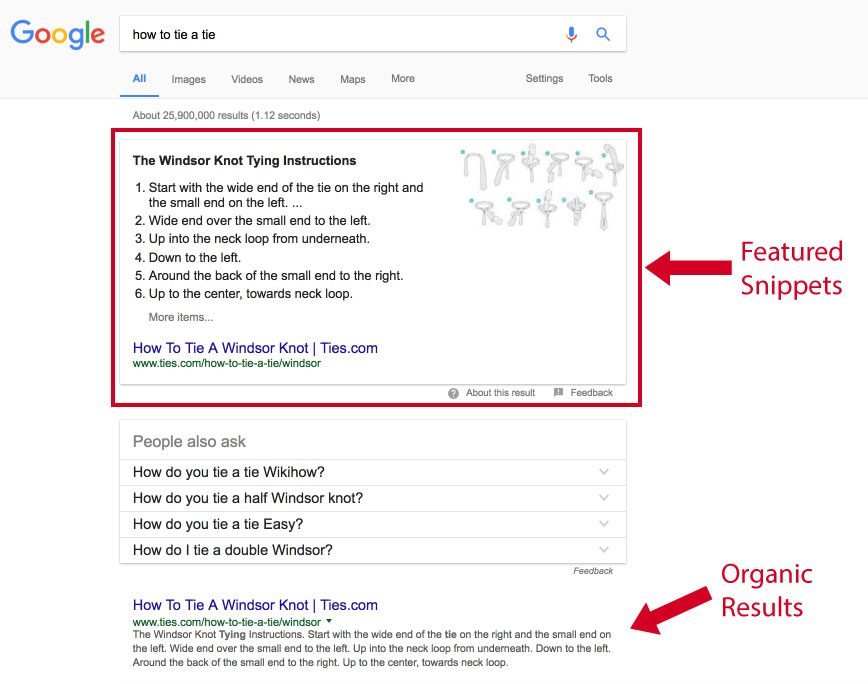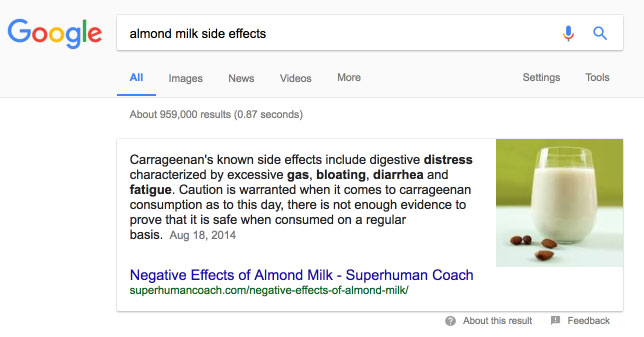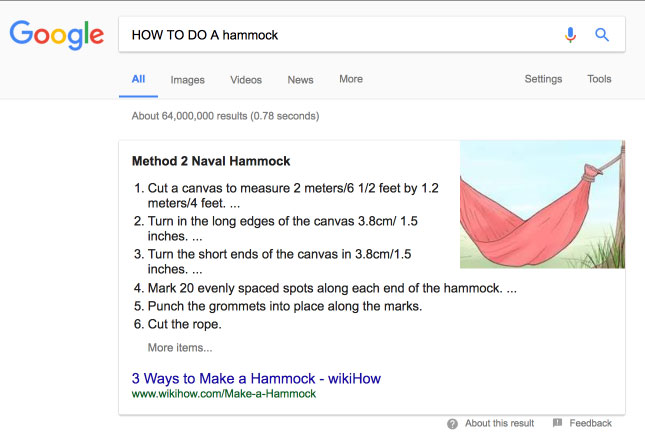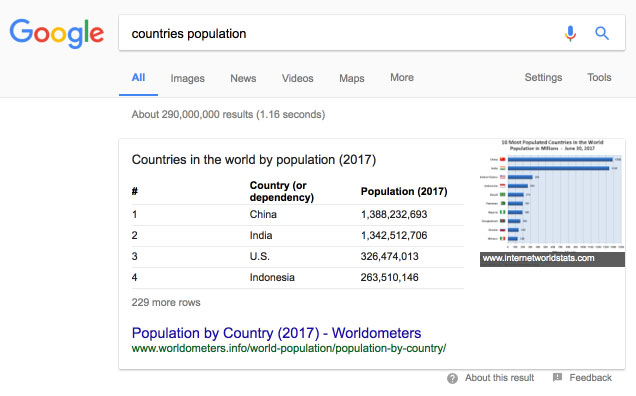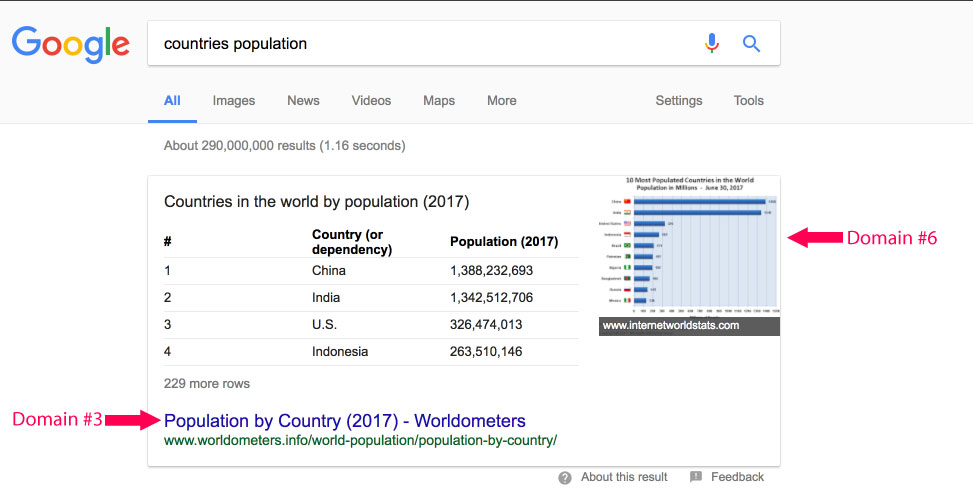For years, the SEO world has been troubled with the same question: “How to achieve the number one position in the search results?”.
To get the first position in competitive and valuable searches was an obsession for SEO professionals. To be on the first page was just not enough.
This phenomenon had a good reason. Some studies demonstrate that close to 30% of clicks in search results occur in the first position and more than 50% happen in the first three positions.
What does this mean? In simple terms, being in the 10th position can be considered the same as being in the 100th position. Few users (or none) visit your page.
There are many possible theories that explain these results and these 3 are the most common:
- The appearance of advertising (AdWords) in the upper part of the results has reduced considerably the visibility of the organic results in the above-the-fold This issue has become even more critical in the last 12 months when Google decided to remove the ads on the side bar to benefit a larger quantity of paid results in the body of the page.
- The increase of searches using mobile phones limits even more the visibility of results based on the reduced size of smartphones (although technology companies are coming out with even larger phones).
- The behavior changes in Google users, those who wait for high quality results in all their searches and when they don’t get them during their first visit, they choose to search for what they are looking for on a different page. This phenomenon is known as “search refining”.
So, why is it important to know all this without even touching on the topic of this post?
Because featured snippets have the capacity to change drastically the SEO world.
What are the featured snippets?
Featured snippets are results “rich in data” that are generated by Google from the content of pages available in specific search results. They are also known in Spanish as detailed fragments, these results are featured in the upper part of the page and are present, known to the SEO industry, as the “zero position”.
This definition can seem complicated, but you have probably come across a featured snippet. Here is an example:
Let’s take a look at the result for a moment. The first thing that many SEO professionals notice is that the attention is given to featured snippets:
- The position above is in the first organic results, ensuring maximum visibility.
- The area occupied by featured snippets is considerably greater than the organic results.
- In many occasions, as with the previous example, this can include multimedia results instead of just text.
- Offer highly relevant information to the user, instead of limiting only the metadata of the page (title, URL and meta description).
- It’s not necessary to be in the number 1 position to have a featured snippet. The image in the example shown is the result of a second position that was featured.
- Regarding the previous point, featured snippets provide double space on the first page of the results.
All these features combined have an important result: a majority of clicks can go to the result that offers a featured snippet.
A study carried out by Hubspot, found that featured snippets produced a higher amount of click through rate (CTR), up to 114%.
If this is not enough to convince you of the importance of featured snippets, nothing else will. Furthermore, if you are interested in knowing how featured snippets work, this guide is important for you.
What types of featured snippets are there?
Three basic types of 3 featured snippets. Exist paragraphs, lists, and tables.
Certain slight variations can exist of each one since Google is frequently testing them, but they can be classified in these 3 types.
Let’s take a look at each one briefly:
- Featured snippet paragraphs. Those that in general terms include a definition although they can also appear in other types of searches. For example:
- Featured snippet lists. These are elements that are commonly numbered on a list or are steps of a process. Here is an example:
- Featured snippet tables. In the majority of cases, this type of featured snippet is used to present a series of data. For example:
I invite you to conduct some searches and analyze the results. Understanding featured snippets can help you understand the next section of this guide.
3 Tips and 1 condition to obtain featured snippets
Condition to obtain a featured snippet
As I mentioned in this post, it’s not necessary to be in the first position of a search to obtain a featured snippet. This, generates several opportunities for new pages with less authority.
However, featured snippets are always generated with content in the pages of the first 10 positions of a search.
This means that, if you want to gain a zero position, first you need to position your content in the first page of the results.
Once you have achieved this, you can improve your content and obtain a featured snippet.
Tip #1: Use a traditional question-answer structure
As you probably noticed in the examples of this post, the greater majority of searches that obtain featured snippets are formulated as questions.
Google tries to get, within your content, an appropriate answer to the user’s question. However, remember that Google uses computers to analyze the content of your page and no matter how advanced the algorithm, it can find it difficult to find answers hidden in metaphors or mixed with humor.
We recommend that you formulate a question for the user in a traditional fashion; similar to what you can find on Wikipedia or a dictionary.
Tip #2: Include search terms with subtitles
Although you cannot be certain of the results, a majority of SEO experts agree that using tags <h2>,<h3>, <h4> and <h5> to include keywords used by users when they conduct searches can increase significantly the probabilities of obtaining a featured snippet.
If you combine tips 1 and 2, you realize that in order to optimize content for featured snippets, we suggest that:
- Your subtitles include questions that users search for on Google.
- The text next to the subtitle includes an answer to a question.
Tip #3: Organize your content in lists and charts.
This tip has to do with the HTML format of your content. In this case, if your content is presented on a list, procedure or series of data, we suggest that you use the correct format to organize the text on your page:
- <ul> for lists of elements without a specific order. For example, a list of ingredients.
- <ol> for lists that follow a certain order. For example, the steps to prepare a dessert.
- <table> to organize data in rows and columns. For example, to number a list of products and their respective prices.
1 Curious and controversial data about featured snippets
When this article was written (May 2017) a group of SEO professionals criticized Google for using different sources of content for the composition of featured snippets:
As the screen save bellow demonstrates, the featured snippet belongs to a different domain than the original one in the image.
This is very interesting.
The complaint is due to certain practices such as this one that lets Google build complex answers in the results content of a page, eliminating the need for users to visit a certain page and find the information they need.
For actions such as this one on behalf of Google, SEO experts feel they must create and position content that answers complex searches and Google will have more difficulty understanding and responding.
Your turn
After reading this guide you now know how to basically adapt your SEO strategy and take advantage of featured snippets (and achieve the zero position).
Note: If you analyze the structure and composition of this article you now realize how to optimize your content for featured snippets ?.
_________________
About the author
Eduardo Yi is an engineer who has become a digital marketing professional. His experience includes working for startups in Boston, San Francisco and New York. Currently, Eduardo works in the company ed-tech and manages a professional project called productop10.
Twitter handle: @eduardoyi

